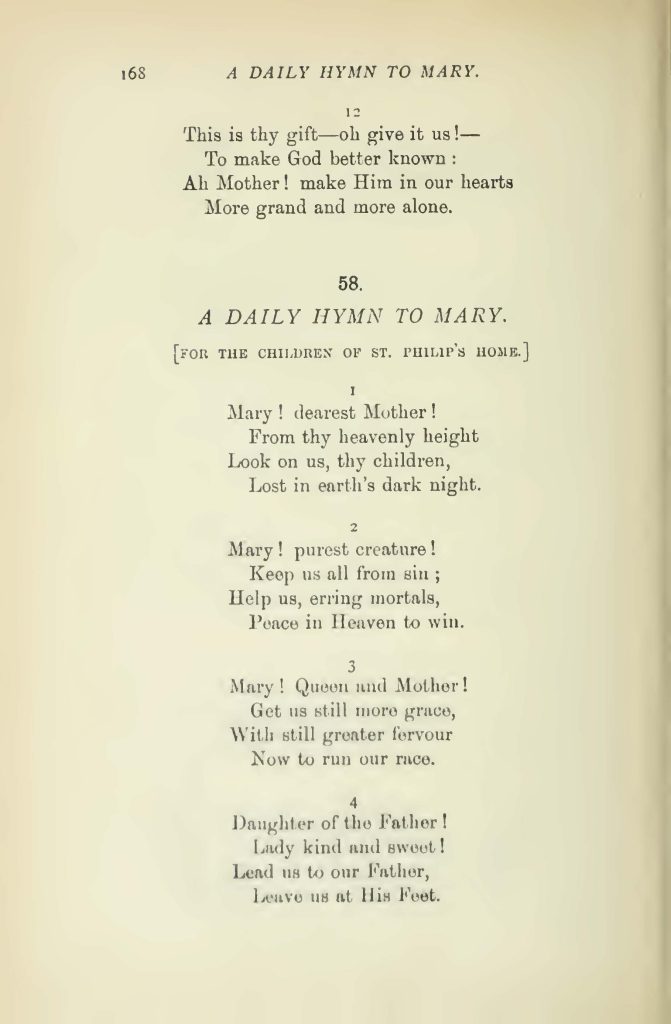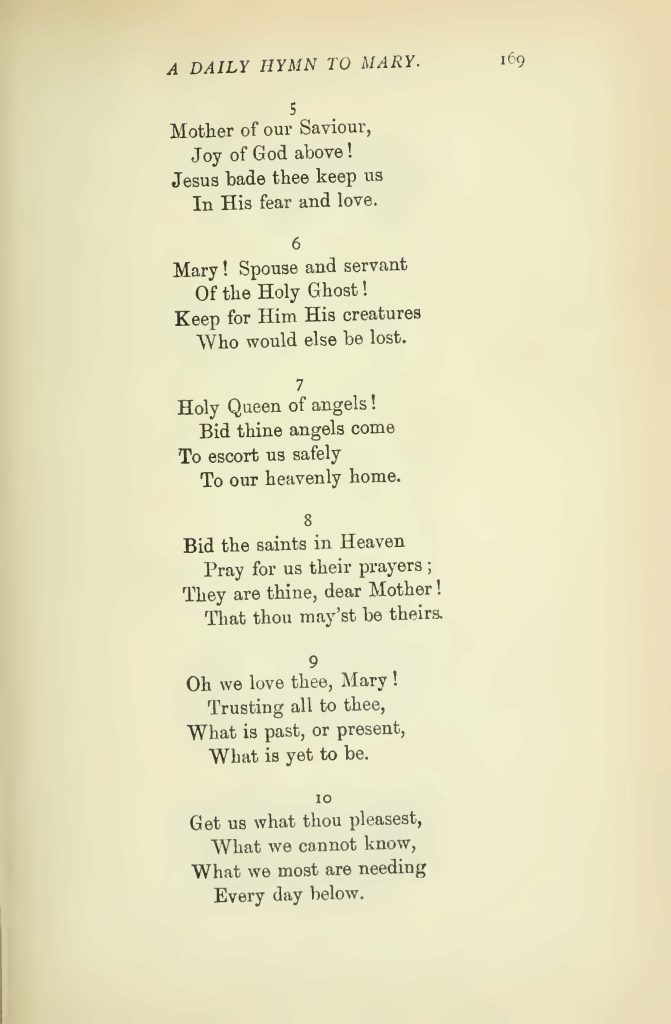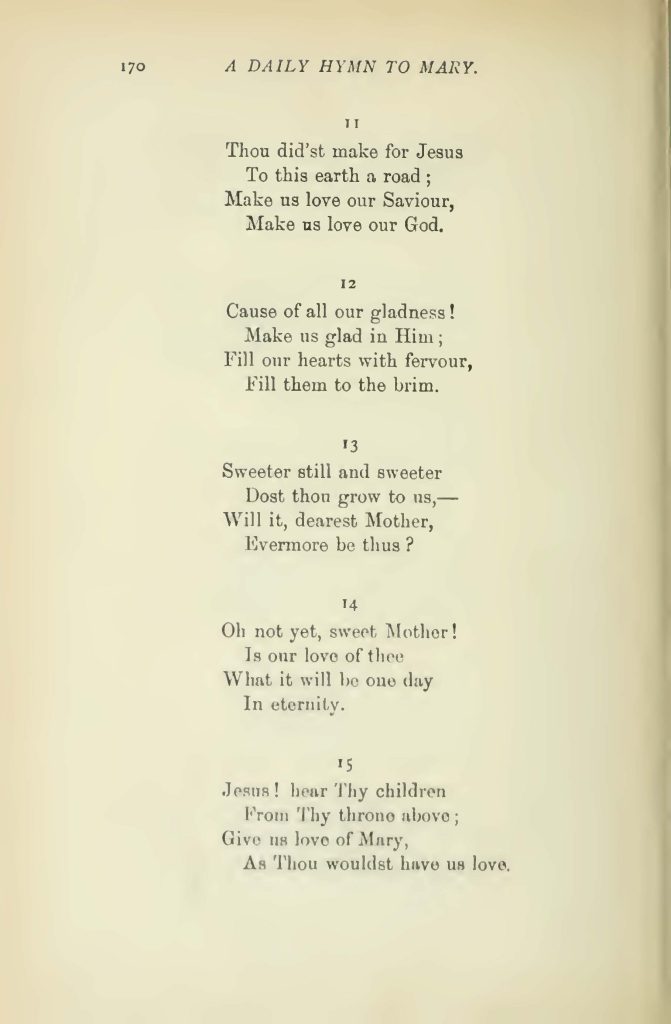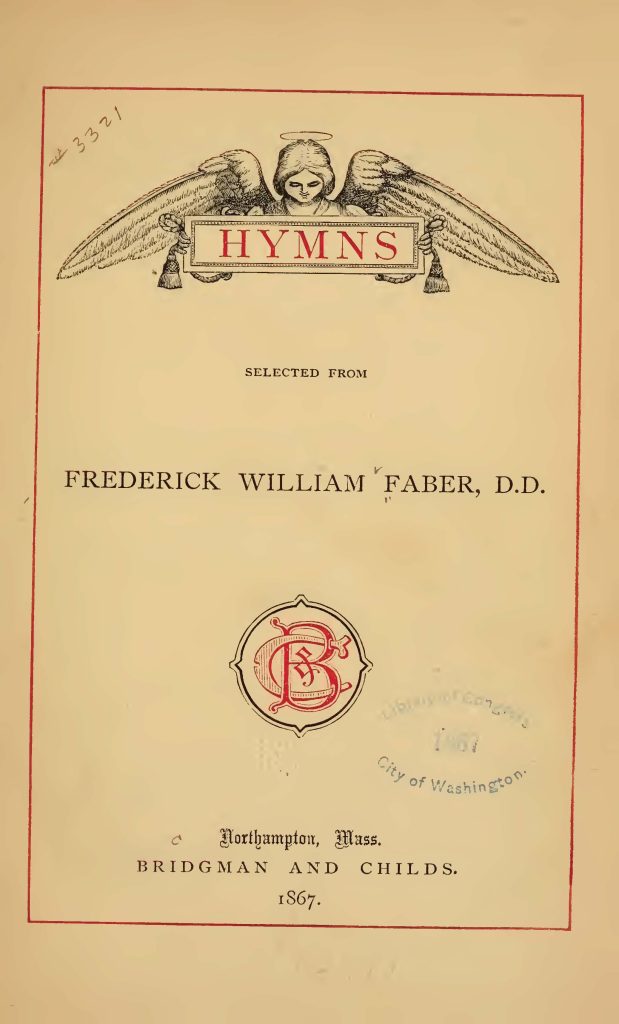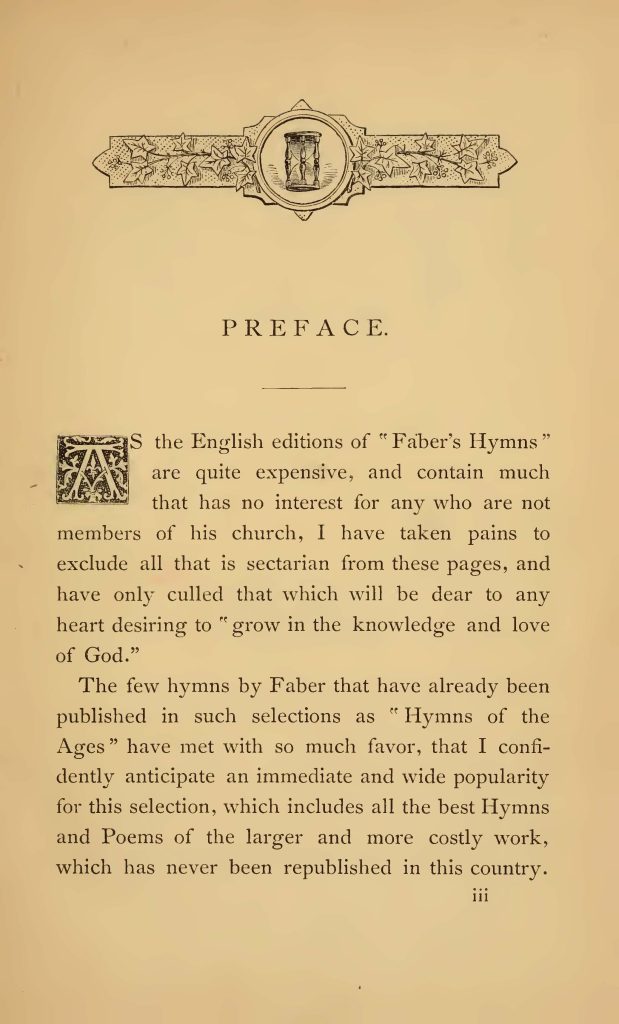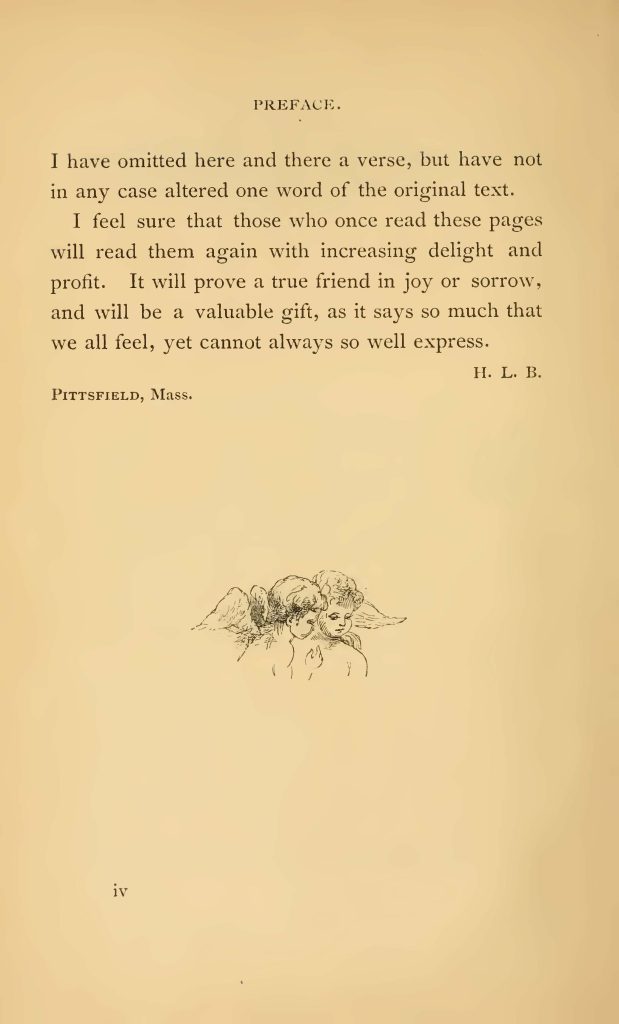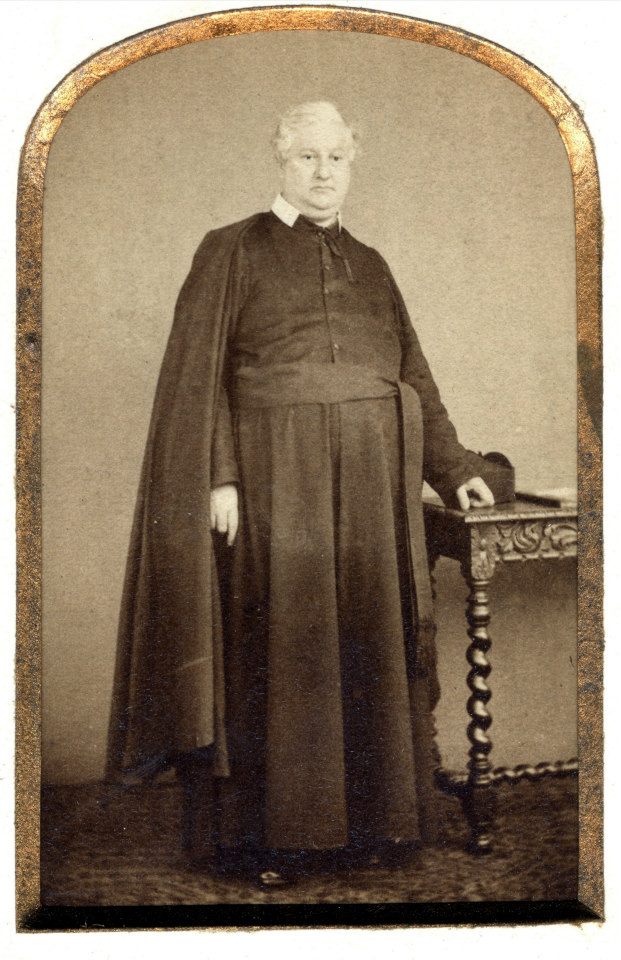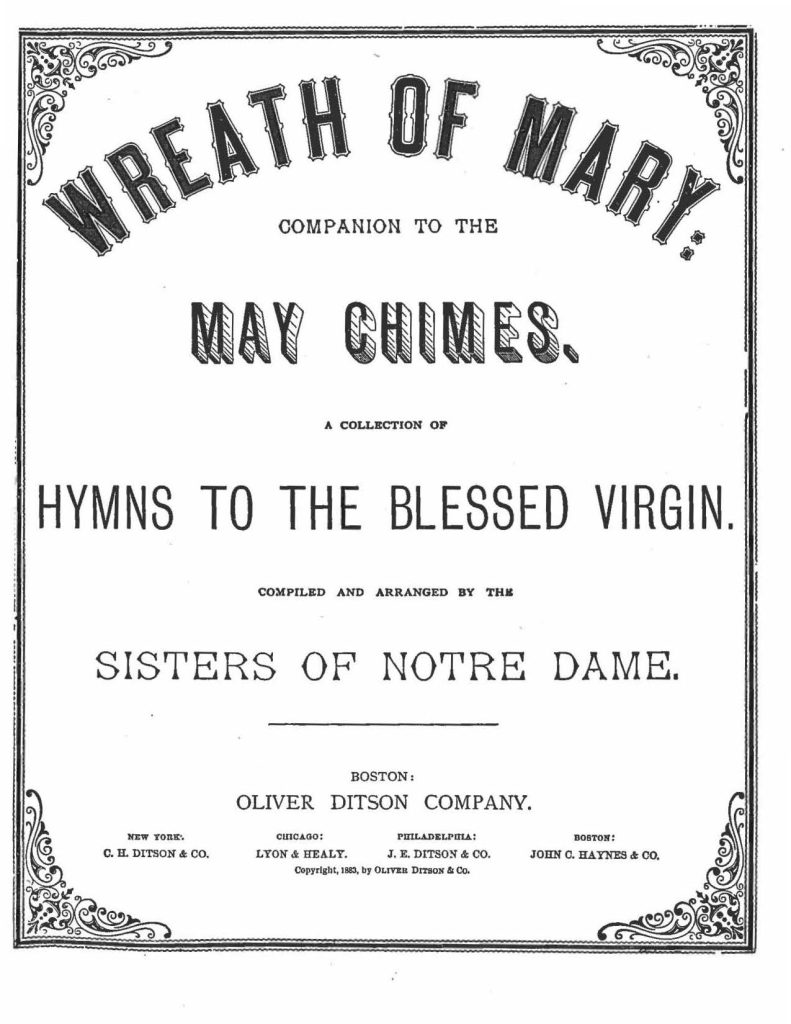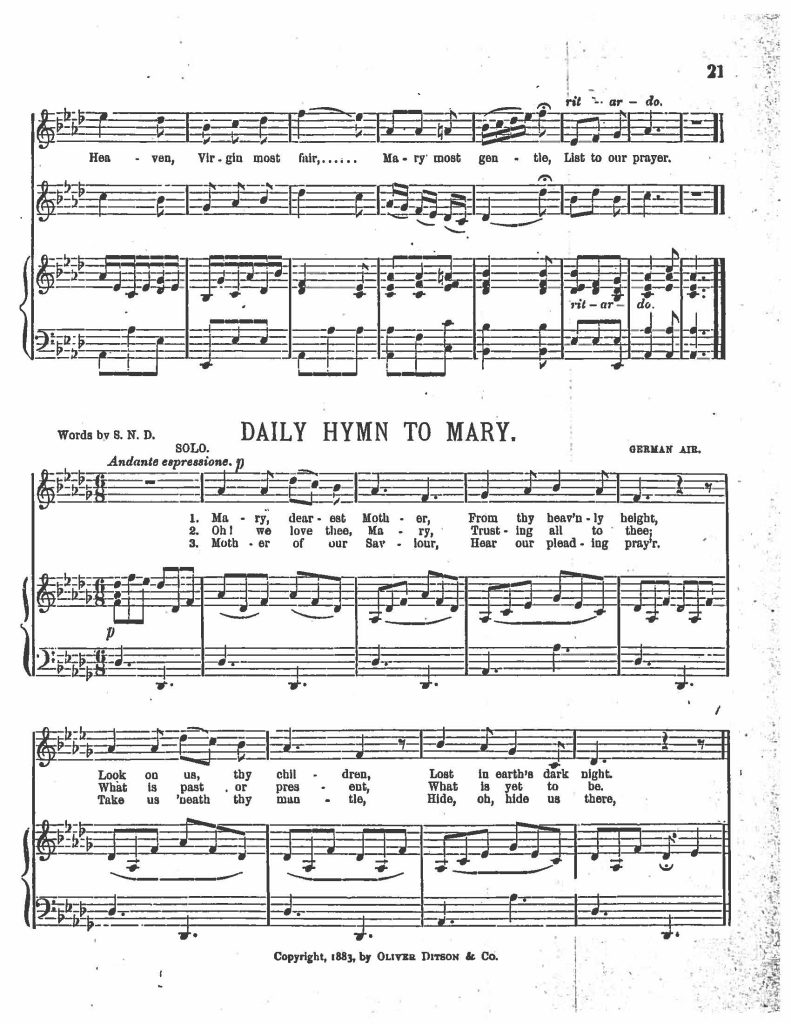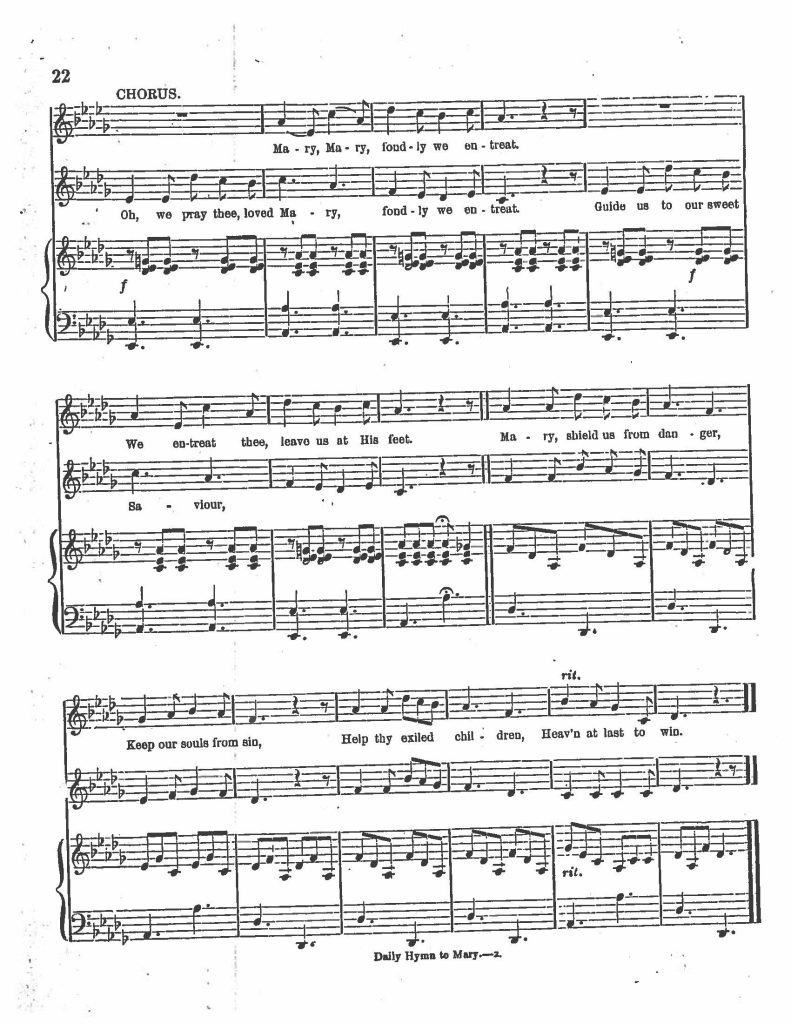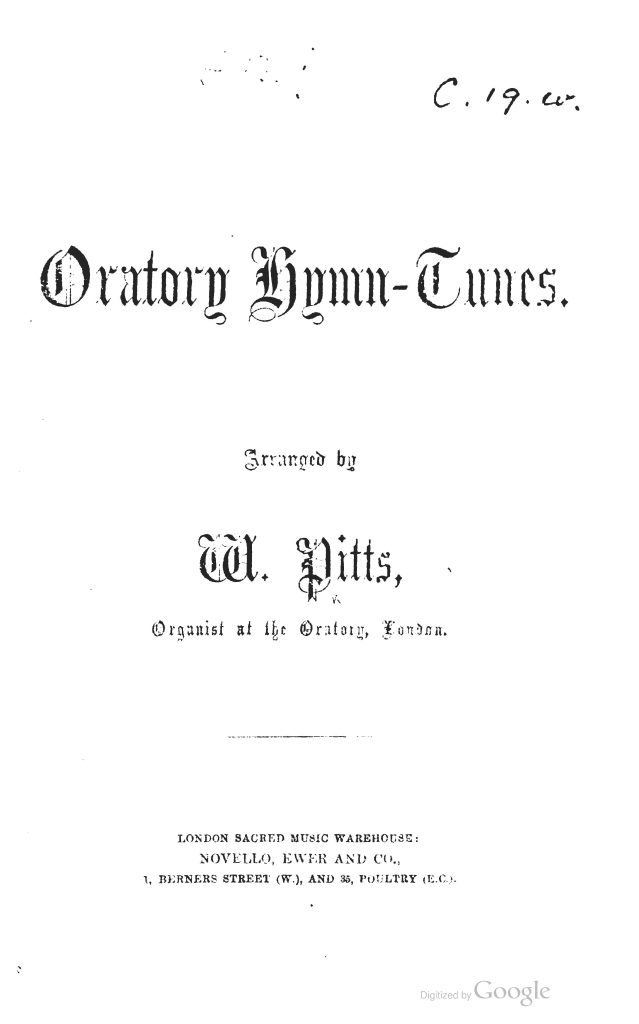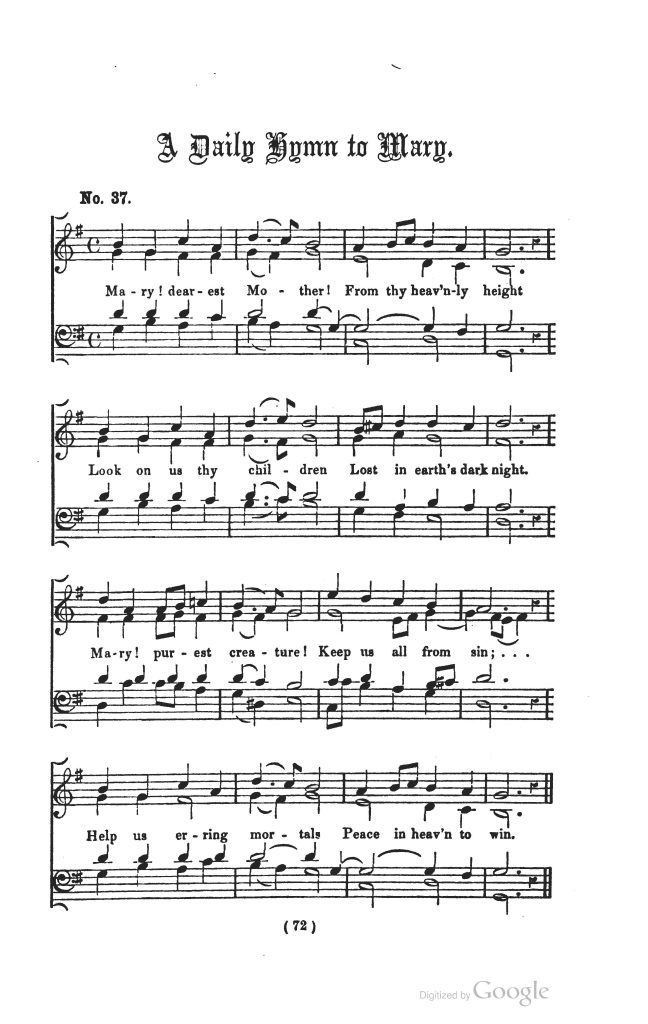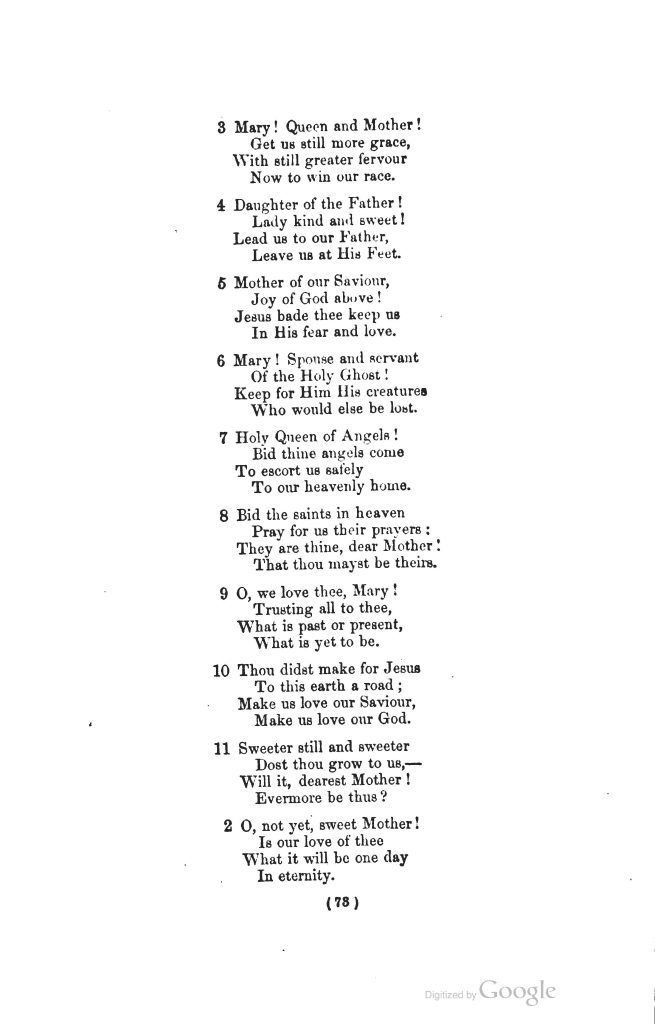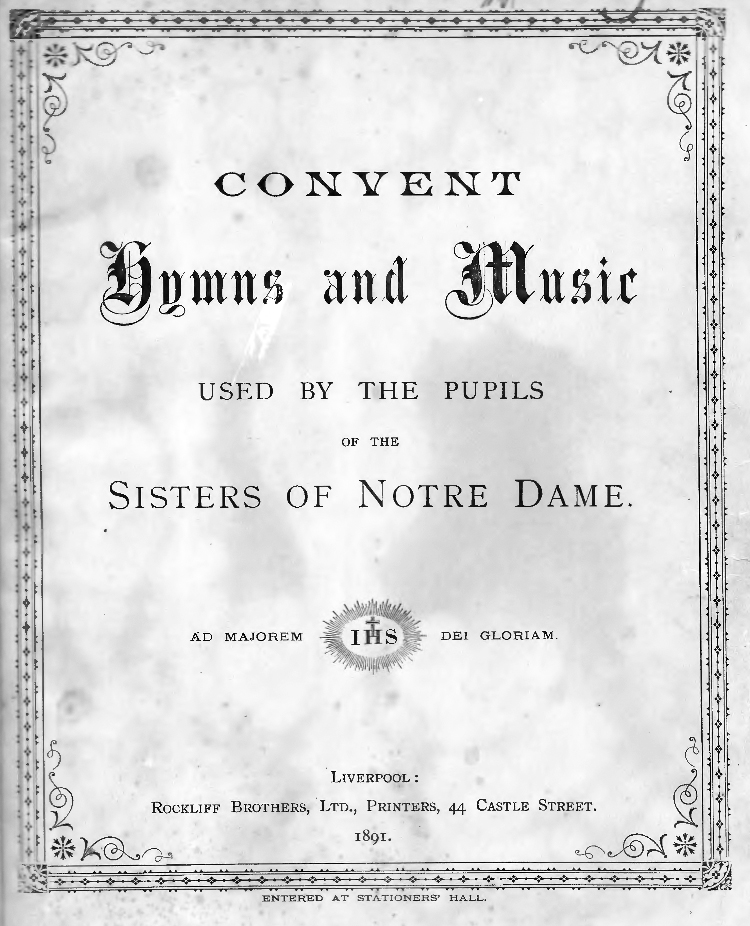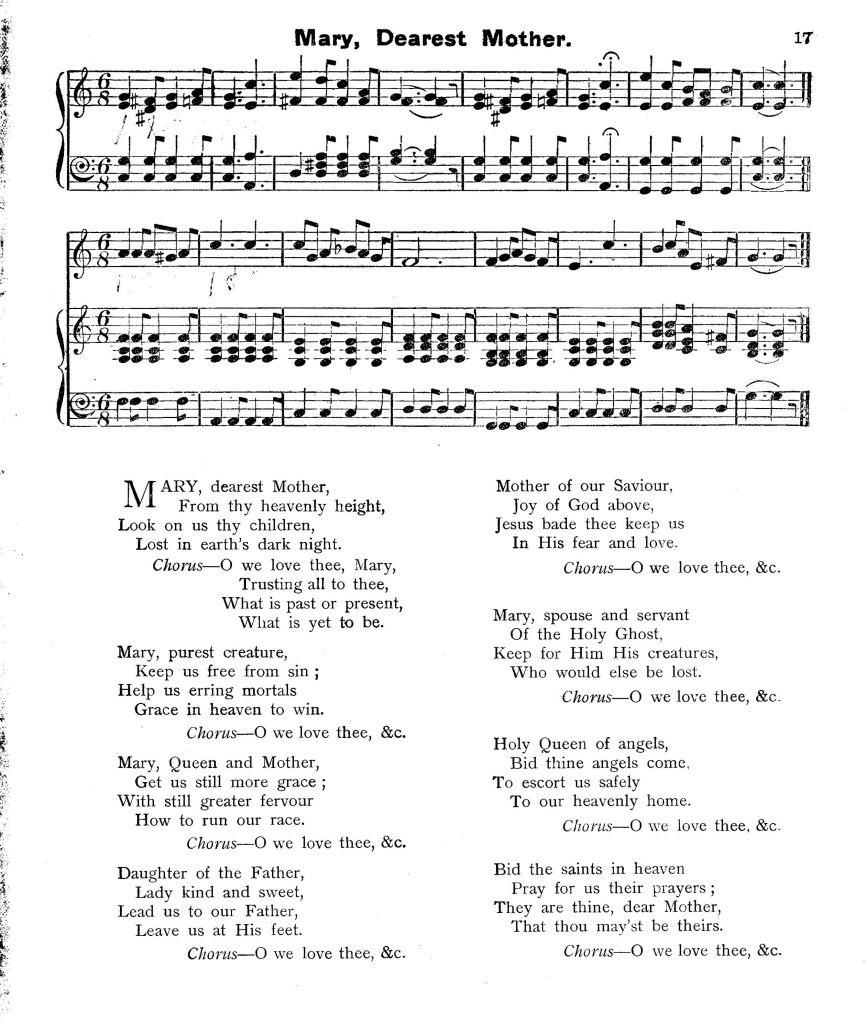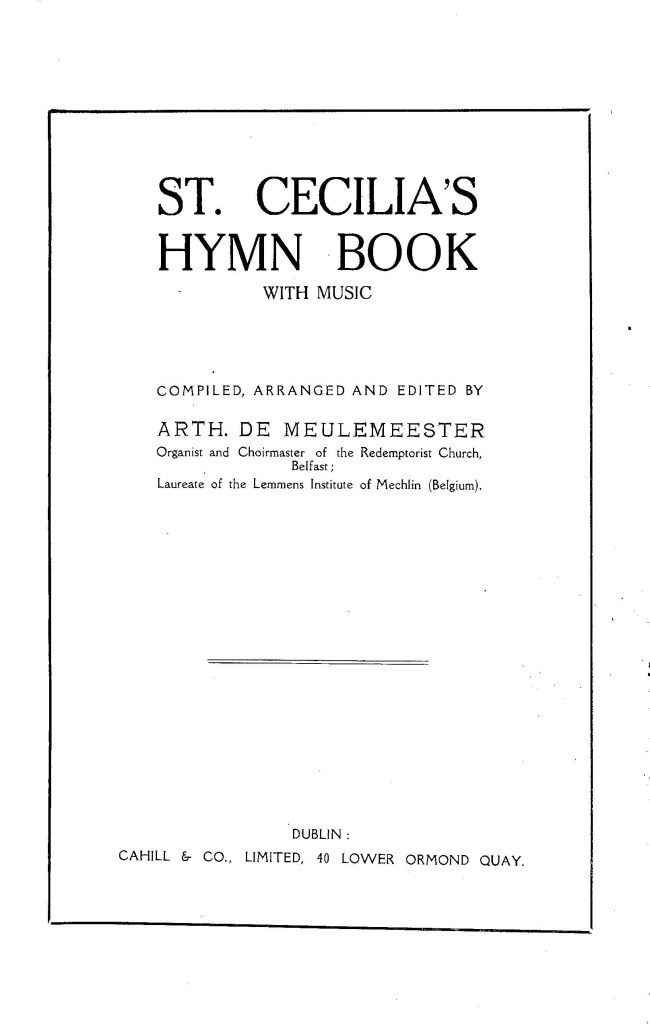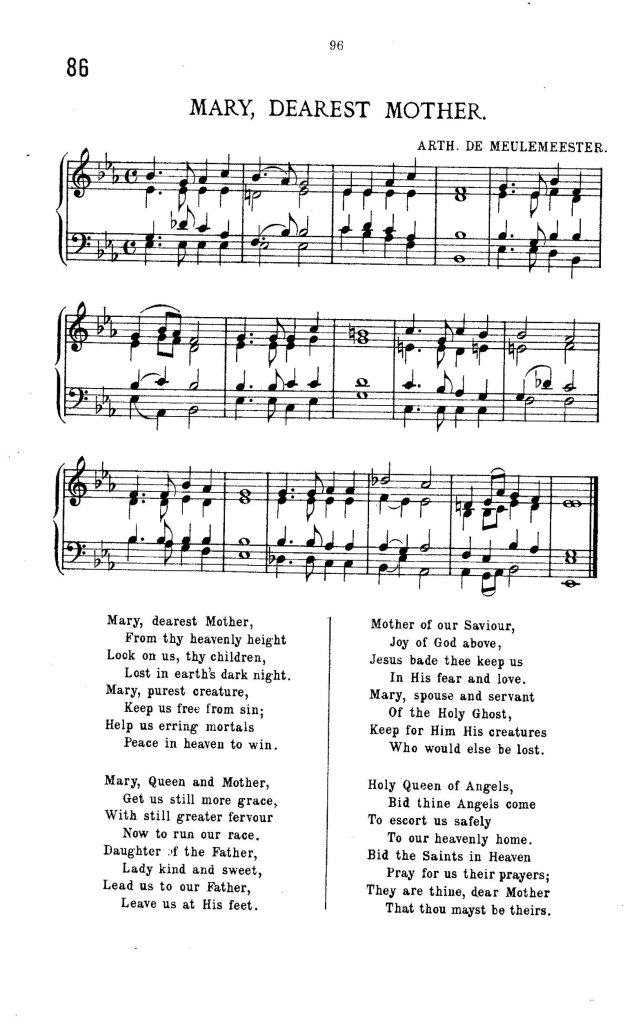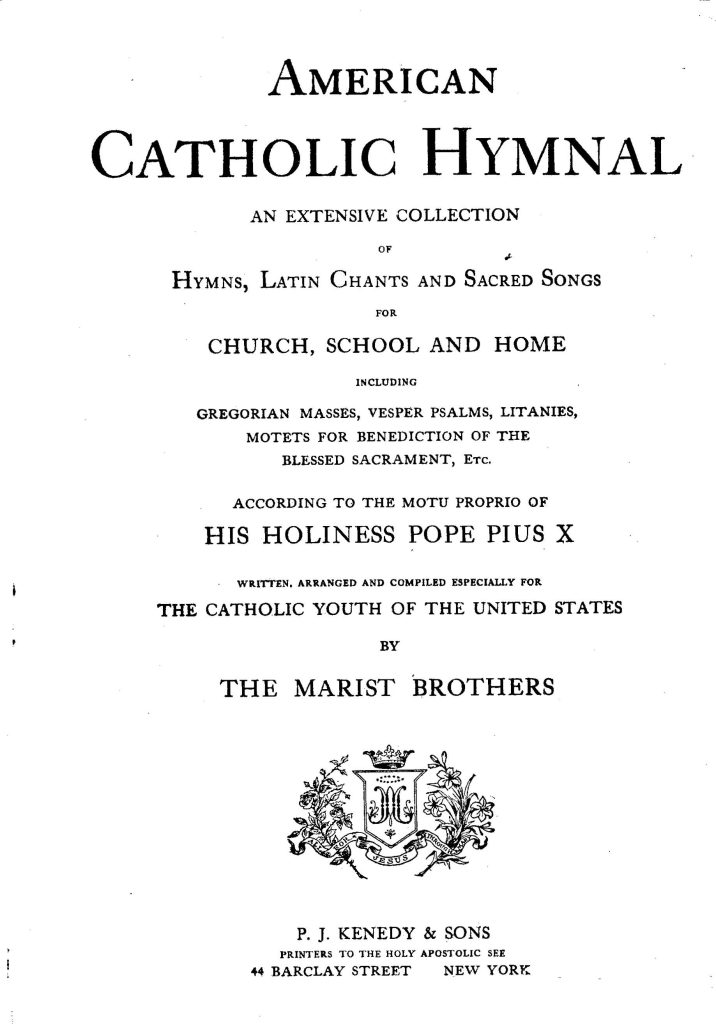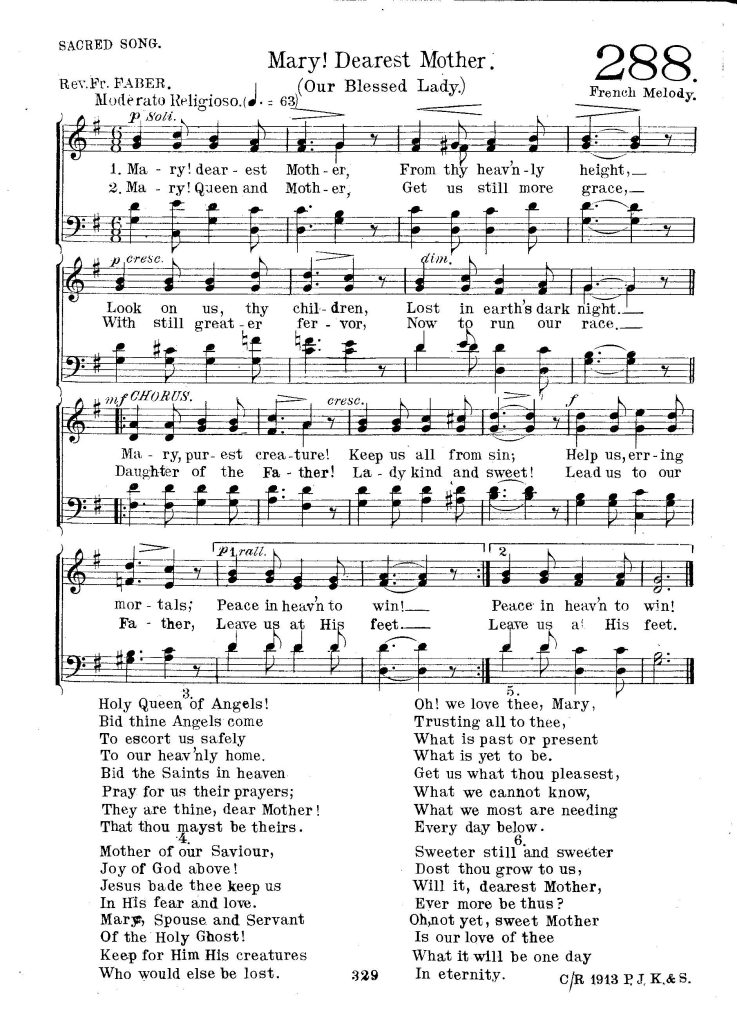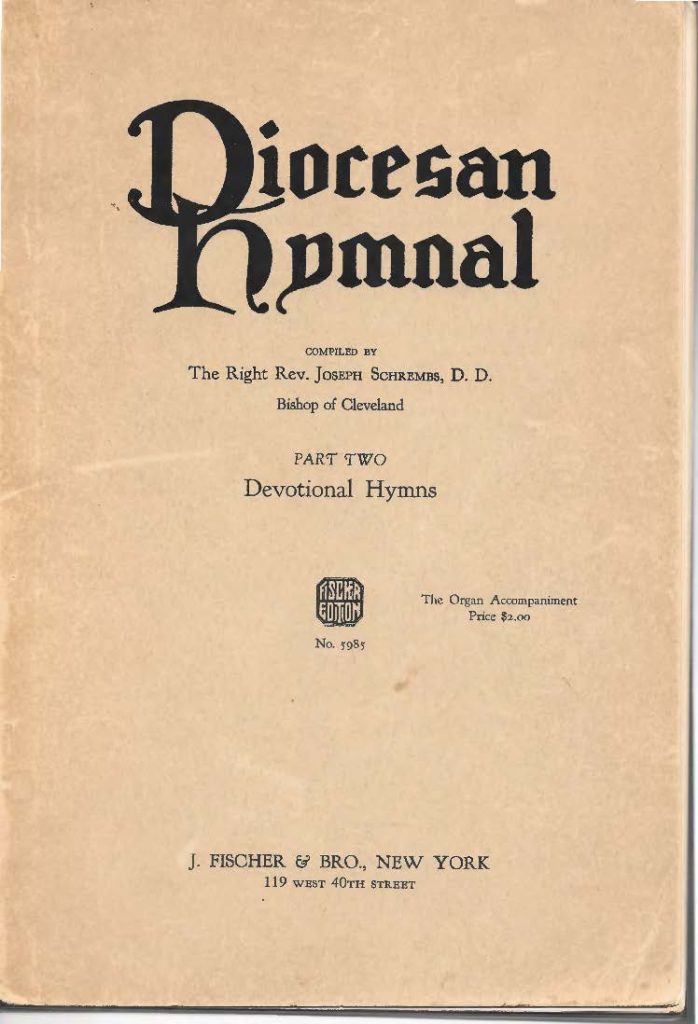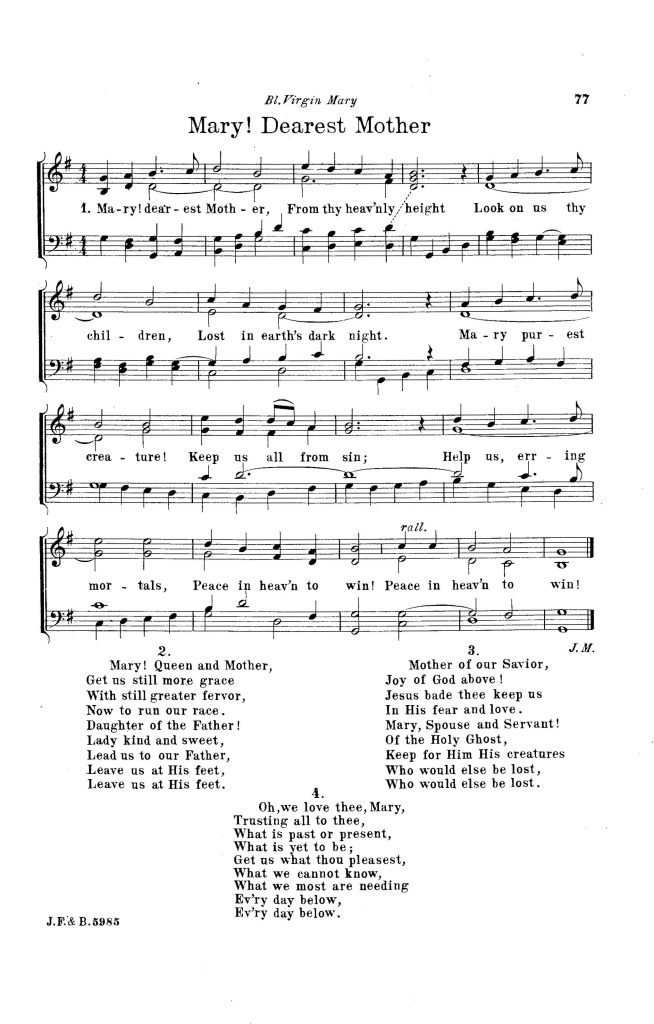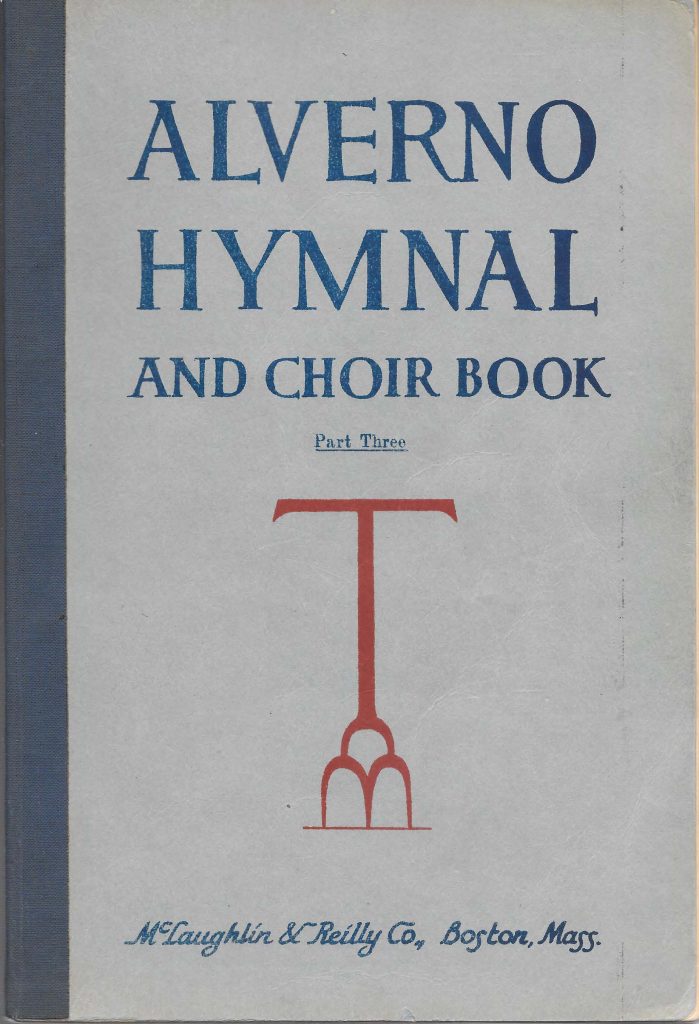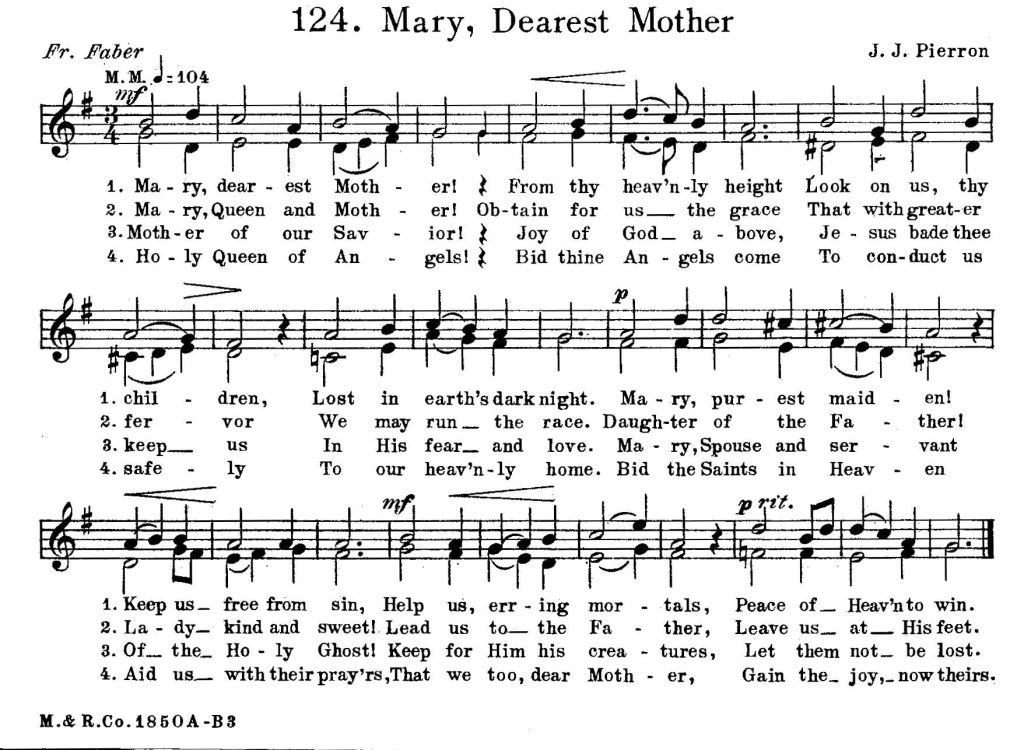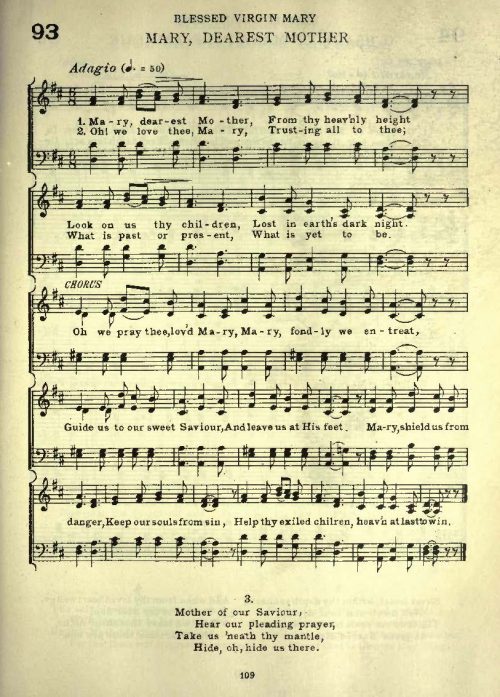Father Frederick Faber (1814-1863) wrote the words to this hymn. It is found in his book of HYMNS that was published in 1861 and captioned A Daily Hymn to Mary (For the Children of St. Philip’s Home). (Click on any image to enlarge)
Father Faber’s journey and conversion to Catholicism cannot be fully explained in this short write-up. I will briefly mention that his journey began when he was attending Oxford University. He was raised a Calvinist, and his religious ideas and views were clearly defined in his mind when he arrived at Oxford in 1832. During this time period a great movement which would become known as the Oxford Movement was underway. I wrote a summary of Father Faber’s journey from Calvinism to Anglicanism and finally to Catholicism in an earlier HYMN OF THE MONTH article over a year ago, if you would like to learn more about his conversion journey and his meeting with the Pope, please follow the link to Mother of Mercy, Day by Day.
I would like to focus just a little on Father Faber’s collection of hymn books. Father Faber authored one-hundred-fifty hymns, many of which were composed to music and several of which we still sing today including:
- Faith of our fathers, living still
- Jesus, My Lord, My God, My All
- Dear Angel Ever at my Side
- Dear Guardian of Mary
- Like the Dawning
- O Come and Mourn With Me Awhile
- There’s a wideness in God’s Mercy
Father Faber began writing hymns in 1848, a few years after his conversion to Catholicism in 1845. The first two hymns that he wrote took place while on a retreat in Yorkshire in the small sea-side town of Scarborough. The hymns were Mother of Mercy, Day by Day and Jesus, My Lord, My God, My All.
His first hymn book was published in 1849, under the title of JESUS AND MARY. The first edition contained forty-three hymns and was published in England and Ireland. It was very successful with one-thousand copies sold. In 1852, after the success of the first edition, a second edition of his JESUS AND MARY was published which added twenty new hymns. This second edition sold more than ten-thousand copies. This was followed in 1854 by a third edition, called THE ORATORY HYMN BOOK, and containing seventy-seven hymns.
In 1856, a collection called POEMS was published. These are not hymns as such, but are poems written by Father Faber on various subjects, places, things, and persons. Some are poems from his early years at Oxford University.
In 1861, a new collection titled HYMNS, was published with more than fifty new hymns. Father Faber wished his hymn collection to favor the Psalter, thus he chose the number one-hundred-fifty as the limit of his collection. The 1861 edition of HYMNS is where we find all one-hundred-fifty hymns in their original form. It must be pointed out that numerous copies of this collection under various titles including SELECTED HYMNS; HYMNS FROM FABER; FABER’S HYMNS with Illustrations, etc., were sold under the auspices of different publishers in England and America. The compilers of these hymn books have either with permission, or without, altered the language, meter, or choruses of his hymns, sometimes to suit their own taste, or to accommodate them to particular tunes.
In the Author’s Preface found in the 1861 London edition, it is pointed out that some of these compilers even changed the doctrine of the hymns, to which Father Faber was less than sympathetic. These editions can easily be identified by the absence of hymns to the Blessed Virgin Mary, the Saints, and Angels. Even so, Father Faber was glad that his compositions should be of any service and refused neither Catholics nor Protestants the free use of them. However, he strictly informed anyone wishing to use his hymns that no direct alterations should be attempted.
As an example, in the collection HYMNS from FABER, published in 1867 by the company Bridgeman and Childs, from Northampton, Massachusetts we can read in the Preface about such exclusions and alterations.
Father Faber’s hymns and poems continue to be reprinted even today. Original copies of some collections can still be found on eBay and other online vintage booksellers. Father Faber also authored of several books including:
- All For Jesus
- The Precious Blood;
- The Foot of the Cross
- Growth In Holiness
- The Creator and the Creature
- The Blessed Sacrament
- Purgatory
Many of these are available through Amazon, and online Catholic Book publishers. I have read a few of these books and found them to be an excellent source of Catholic teachings and spiritual nourishment.
The hymn Mary! dearest Mother! appeared in several Catholic hymnals among them are ORATORY HYMNS with TUNES, 1878 arranged by William Pitts; THE PAROCHIAL HYMN BOOK, 1881 and 1883; WREATH OF MARY, 1883; the ST. BASIL’S HYMNAL from 1888 thru 1925; CONVENT HYMNS with MUSIC, 1891; THE NOTRE DAME HYMN TUNE BOOK, 1905; ST. CECILIA’S HYMN BOOK (Dublin); AMERICAN CATHOLIC HYMNAL, 1913 and 1921; the STANDARD CATHOLIC HYMNAL, 1921; the Cleveland DIOCESAN HYMNAL PART 2, 1928; the ORDINARY OF THE MASS AND A COMPLETE MANUAL OF HYMNS, 1935; the ALVERNO HYMNAL, 1953; and a few others. My hymnal survey for Mary Dearest Mother is available for download.
The traditional text of the hymn with its chorus Oh We Pray Thee, loved Mary, fondly we entreat, first appeared in the WREATH OF MARY, compiled by the Sisters of Notre Dame, and published by the Oliver Ditson Company in 1883, with the words attributed to a Sister of Notre Dame. The first and second verses are from Father Faber’s hymn, it is the third verse and the chorus that were written by a Sister of Notre Dame.
Identifying the Sister who composed the words of the third verse and the chorus is extremely difficult because of the custom that in religious orders attribution should be given to the community rather than the individual. It was only after Vatican II that this custom began to change. In many instances the identity was handed down by verbal tradition from one sister to another. In other instances, the identity has been carefully stitched together by hymn researchers.
The Melodies
I found seven different melodies that have been arranged or composed. The first melody considered traditional to this hymn and is found in the WREATH OF MARY, 1883. It is listed as a German Air.
I am aware of a few Sisters of Notre Dame who were hymn writers including Sister Mary Xavier who gave us the hymn Just for Today, plus several other hymns; Sister Mary of St. Philip who gave us the translation for O Come Divine Messiah; and Sister Mary of St. Joseph who gave us the hymn O Infant Jesus, but there is no evidence linking any of them to Mary! dearest Mother! So, the identity of this Sister remains a mystery.
The second melody is found in the ORATORY HYMNS with TUNES, 1878. It was composed by William Pitts (1829-1903), the son of an organ builder. He served as the organist at the Oratory in London for more than fifty years.
A third melody is found in the CONVENT HYMNS and MUSIC used by the Pupils of the Sisters of Notre Dame, published in Liverpool, England in 1891. This hymn collection was widely used in England, Ireland, and perhaps Australia. My copy shipped to me came from Dublin, Ireland. There is no Preface or Introduction to this collection which contains forty-four hymns. A handful are from Father Faber’s HYMNS.
The fourth melody was composed by Arthur De Meulemeester (1876-1942) and appeared in ST. CECILIA’S HYMN BOOK, published in Dublin, Ireland. He was the organist and choirmaster at the Clonard Monastery of the Redemptorist Order in Belfast (Ireland). He founded the St George’s Singing Choir which achieved great success under his leadership. In 1911, he compiled, arranged, and edited the St Cecilia’s Hymn Book, with two hundred sacred songs in English that was widely used. He was a prolific composer of sacred music, several Masses, and motets. He was decorated by Pope Pius X and received the Pro Ecclesia et Pontifice award for his distinguished service to the Catholic Church.
A fifth melody appears in the AMERICAN CATHOLIC HYMNAL published by P. J. Kennedy & Sons of New York City in 1913 and again in 1921. This collection of Hymns, Latin Chants, and Sacred Songs for Church, School, and Home was compiled by The Marist Brothers. This hymnal contains more hymns from Catholic periodicals than perhaps any other for its time. About twenty are taken from the Messenger of the Sacred Heart, Ave Maria, Rosary Magazine, Voice, and Sentinel of the Blessed Sacrament.
These periodicals were quite popular during the late 19th and early 20th century periods, and often contained sacred poems that would be composed to music. In the 1913 edition, the composer indicated is M. H., and in the 1921 edition for the same hymn and tune it is listed as a French melody. The 1921 edition also contains a listing of authors, composers, and meters.
A sixth melody was found in the Cleveland, Ohio DIOCESAN HYMNAL PART TWO – DEVOTIONAL HYMNS. The Diocesan Hymnals were compiled by The Most Rev. Joseph Schrembs, D.D., (1911-1945), Bishop of Cleveland. Bishop Schrembs was elevated to Archbishop in 1935 and hosted the Seventh National Eucharistic Congress in Cleveland in the same year. The hymn collection was published by J. Fischer & Bro., New York in 1928.
The melody was composed by Bishop Schrembs and harmonized by Joseph Ignace Müller (1880-1950). He is one of several musicians acknowledged for harmonizations in the Diocesan Hymnals, and he is listed in the Catalog of Copyright Entries of 1942, for a Mass in Honor of St. Benedict. Joseph was an organist at St. John the Baptist Church in the Bronx, NY., in 1918. He died October 2, 1950 around age 70.
The last melody I found appeared in the ALVERNO HYMNAL AND CHOIR BOOK PART 3, published in 1953. The Alverno Hymnals were compiled by Sister Mary Cherubim Schaefer, OSF (1886-1977). Sister Cherubim was a member of the School Sisters of St. Francis. The Alverno Hymnal was published in three parts over the course of five years. They are:
- 1948 ALVERNO HYMNAL BOOK 1 – Advent, Christmas, Holy Name, Epiphany, Holy Family
- 1950 ALVERNO HYMNAL BOOK 2 – Lent, Holy Week, Easter, Ascension, Pentecost, The Holy Trinity, Corpus Christi, Christ the King, and All Saints.
- 1953 ALVERNO HYMNAL BOOK 3 – Hymns for Low Mass, to Our Lord, the Holy Eucharist, the Sacred Heart, the Blessed Virgin Mary, Guardian Angles, Holy Souls and SS Joseph, Francis of Assisi, Patrick, Anthony, and Cecilia.
The melody was composed by Father Joseph J. Pierron (1875-1949). He is best known for compiling the AVE MARIA HYMNAL in 1936. The AVE MARIA HYMNAL saw several printings with the first edition published in 1929 and the last edition in 1941. The hymnal is a collection of English and older German melodies. Joseph Pierron was ordained a priest in 1905 and studied music in Europe for three years. He held assistant positions in various parishes and pastorship in several prominent churches throughout Wisconsin. In November 1948, he was made director of Music at Father Flanagan’s Boys’ Home in Boys’ Town, Nebraska where he served until his death in April 1949. Father Pierron was editor of the Caecilia magazine in 1930, and composed several hymns, hymn collections, mass settings, and authored several articles on music.
Reflection
Mary! dearest Mother! is a beautiful collection of daily invocations to the Blessed Mother for her help, her intercession, and her protection. Just as children love and implicitly trust in their mothers so we love and place our trust in her. We humbly seek her help to guide us to our Saviour and leave us at His feet.
Some will say that when we love our Blessed Mother this much that we place her above her Son! What nonsense, how can we love her more than Jesus loves her? As you sing the verses you are drawn into the poetic imagery of Father Faber’s hymn. How many times during our lives do we seem lost in earth’s dark night? How often does some anxiety overwhelms us, some fear because of the words or actions of others and oh! how our mind plays tricks on us when we cannot see, what is past or present, what is yet to be.
And so,
Jesus! hear Thy children
From Thy throne above.
Give us love of Mary,
As Thou wouldst have us love.
The melody I learned to sing is from the ST. BASIL’S HYMNAL and is the traditional melody from the WREATH OF MARY.
A special thank you to Peter Meggison producer of the Devotional Hymns Project for allowing me to link to a recording of professional voices at St. Peter’s Church in Columbia, South Carolina.
Below are computer generated sound files. The tempo is approximate but should provide the listener with a good sense of what the hymn sounds like. Music and choir directors, if you use any of these selections in your Sunday or weekly music programs and you make a recording, contact the author so I can feature it in the What’s New section of the website.

